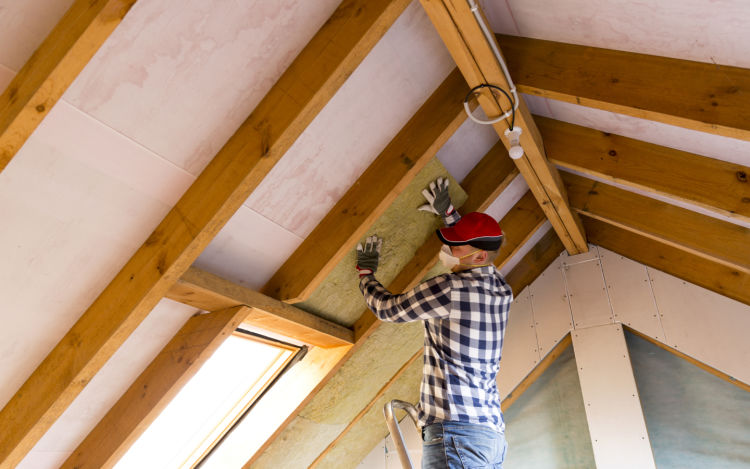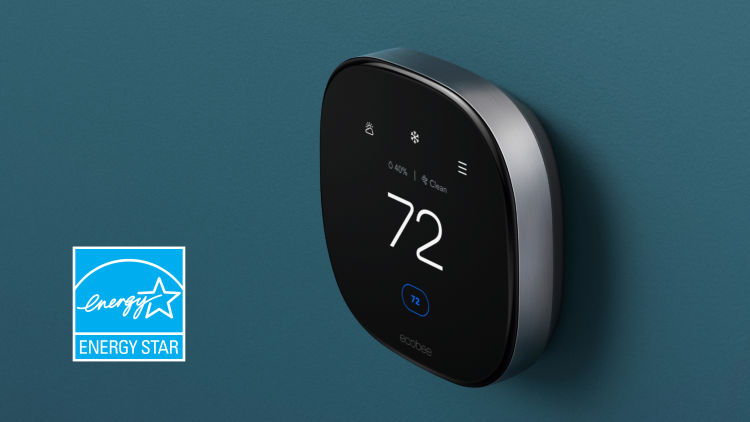How to Protect At-Risk Communities During Power Outages
We spoke with a prominent energy researcher about protecting at-risk communities during heatwave-induced rotating power outages.
by ecobee on 08/25/2022 in Experts
12 min read

More than 200,000 ecobee Smart Owners have opted-in to ecobee’s one-of-a-kind Donate Your Data program, creating a unique window into energy use in the home, and making it the world’s largest home energy efficiency dataset. By sharing the anonymized data from customers who have opted in, ecobee is helping researchers around the globe in their studies aimed at creating a more sustainable and healthier future for communities.
“A big part of our impetus for starting ecobee was to transform scientific research and make breakthroughs possible,” said Stuart Lombard, ecobee founder and CEO.
“At that time [2007], energy efficiency studies were limited to a handful of homes because the cost to equip homes with the proper instruments was prohibitive.”
Following through on Stuart’s vision, the team launched Donate Your Data in 2017.
Today, a prominent scientist using this data is Tianzhen Hong, a senior scientist at the Lawrence Berkeley National Laboratory. We sat down with Dr. Hong to discuss the results of an important study with real-world implications for California residents—and one only made possible with the one-of-a-kind Donate Your Data dataset.

ecobee Citizen: What is your study about and why is this research important?
Dr. Hong: We used the Donate Your Data dataset to study how long it takes houses and buildings to heat up during power outages to where residents are exposed to real health risks. So, fundamentally, it’s important because it is about people’s health and well-being.
In the past, building energy codes were focused entirely on energy use and efficiency. So, for example, the code stipulates that in a new house, you must have a certain kind of insulation in the walls, double-pane windows, etc. But as we experience more frequent power outages due to extreme weather, we cannot just assume the home will always have power to run the air conditioning. On a very hot or very cold day, if you don't have the power to provide heating or cooling, your indoor temperature will go to the extreme. Regulators must be aware of these worst-case scenarios because they are becoming increasingly common. That's why we're interested in understanding these heat or cold hazards. By understanding them better, we can inform the building code.
And there is also an equity aspect to this. In the San Francisco Bay Area where I live, 50% of households don’t have air conditioning. In September 2017, we had a three-day heatwave. The people that didn’t have air conditioning suffered a lot. So, we try to understand the customers who are put at high risk by heat hazards and how we can help them.

ecobee Citizen: What sorts of features do you think should be mandated in building codes?
Dr. Hong: We want to ensure homes have passive design features, like good insulation and operable windows because if the indoor temperature is hotter than outdoors, you want to open the windows to cool it down. We also want to ensure there is some window shading to reduce solar heat gain through the window.
Designing for survivability during power outages is a critical but, up until now, neglected aspect of building design and operation. This is something that's been proven in our research and that we must advocate for.
ecobee Citizen: What is your field of study?
Dr. Hong: Essentially, I look at human-building interaction. I'm a senior scientist at Lawrence Berkeley National Laboratory, where we study building energy efficiency, demand flexibility, and climate resilience. We are focused on building decarbonization and electrification, which is also the focus of the U.S. Department of Energy, which funds our research. We look at building technology from the human perspective—analyzing peoples' occupancy patterns, temperature preferences, and adaptive behaviors—to understand how they use energy and interact with buildings.

ecobee Citizen: What are the dynamics at play that have necessitated your research?
Dr. Hong: As you may know, climate change has made heatwaves more frequent and intense. Heatwaves place extreme stress on the grid because higher temperatures lead to more use of air conditioning. In California, this has resulted in more frequent rotating power outages.
Power shutoffs due to power supply shortages on a scorching day can leave millions without air conditioning, putting many at risk of overheating. So, we are interested in knowing how long it takes for the indoor temperature to reach a critical level—a level that will cause harm to people—after the power’s cut and the air conditioning stops. By studying this, we can let utility providers know how long they can cut the power in a particular area without endangering people’s health.
In older houses without AC, during a heatwave, indoor temperatures can climb to 85 or even 90°F within a few hours.
ecobee Citizen: How did your team use the Donate Your Data dataset in this study?
Dr. Hong: Every home is different, with unique thermal characteristics, and subject to different weather. Using the DYD dataset, we can infer a home’s thermal dynamics and estimate how long it takes for the indoor temperature to rise to a hazardous level during a power shutoff. It’s not that we are just interested in one house or two, we are looking at housing at all levels, from individual homes to neighborhoods to states and regions. This is why the ecobee DYD dataset is uniquely valuable. It allows us to study building thermal performance at both the micro and macro levels to identify patterns and trends.

ecobee Citizen: What were your findings?
Dr. Hong: We looked at the homes across California and found huge variations in the local climate. For instance, San Francisco is mostly cool, even during summer, while the nearby Central Valley is very hot. We used the ecobee DYD data to run analytics to find different clusters of homes in the state. There are those, for instance, where homes are very poorly insulated or very leaky, and we can assume very old. They may still have single-pane windows. Once the air conditioning was cut, the indoor temperature in these homes rose quickly. Within an hour or two, it would increase to almost 80 degrees Fahrenheit.
In comparison, we found the newer homes with better insulation, double-pane windows, and perhaps some shading devices to be in much better shape—the temperature increase in these homes would be much slower. In some of them, it would take four to five hours of the power being shut off before indoor temperatures reached 80 degrees Fahrenheit.
So, we’re finding that the more recent homes with better insulation and energy efficiency are in much better shape to withstand these kinds of heat hazards.

ecobee Citizen: To protect public health, utility providers planning these rotating shutoffs should limit them to a certain length. Correct?
Dr. Hong: How long the utility provider can shut the power off before causing an overheating risk to occupants can be inferred from the local data. We analyze the data so that when the company does a rotating power outage, it can consider factors like the energy efficiency of the homes in a specific locale and local weather conditions. In areas, especially the vulnerable communities, where most homes are not able to stand up to the heat well, we may need to consider safety measures.
Utility providers need this kind of local, contextual information to improve their decision making. Instead of making the assumption that everywhere is the same, it is essential to consider the variability in energy efficiency within the housing supply, local weather conditions, and the make-up of the local population. For instance, knowing that seniors are much more vulnerable to the heat, an area like Daly City, where 12% of the population is over 70, should avoid or have a shorter rotating power outage than San Francisco suburbs with fewer seniors. Essentially, using ecobee’s rich DYD dataset, our research can produce high-resolution recommendations to help guide the planning of these kinds of planned power outages.
ecobee Citizen: What are the advantages of using the Donate Your Data dataset over conventional methods?
Dr. Hong: The advantages are threefold. First, we can save costs and labor because we are using the existing DYD dataset at no charge. Second, the sample size we can obtain using the DYD database is 23 times larger than the second largest source and it’s more detailed, which enables a more robust, accurate, and reliable estimation of each building’s thermal performance. Lastly, the models we have developed for this study can, and are, being repurposed for other applications, such as estimating the load shifting potential of residential buildings by leveraging their passive thermal storage.
ecobee Citizen: If I’m understanding you correctly, this sounds a lot like something that ecobee is already doing with eco+. Today, ecobee thermostat customers in select areas can automatically pre-cool or pre-heat their homes based on their utility’s time of use rates.
Dr. Hong: Yes, load shifting moves electricity consumption from one time to another, making it a valuable tool to help stabilize the grid. Technologies like eco+ that automate load shifting are even more valuable because they don’t require human intervention, and make the switch seamlessly, allowing the homeowner to use more clean, affordable energy and less electricity generated during peak times.

ecobee Citizen: How do you see your research findings being used?
Dr. Hong: I always see publishing the initial results as the starting point. We are reaching out to utility providers and the California Public Utilities Commission, the regulator, and hoping through collaboration with them to incorporate these insights into their emergency planning. We are developing research proposals with utility providers that will use this more granular, localized data to help them better handle these kinds of adverse, but necessary shutoff events that are on the rise due to climate change and other factors.
ecobee Citizen: One of the things I saw in the research paper is that utility providers can do a better job of helping the public plan for scheduled outages by giving them some advance warning and advice on what to do.
Dr. Hong: Every home has a certain level of thermal mass, which provides inertia that slows down the impact of outdoor temperature fluctuations. The rate of temperature change of a particular house during a heatwave depends on its thermal mass. If a customer knows in advance that there is going to be a power outage, they can pre-cool their home by a few degrees. Doing so will buy them more time during the outage before the temperature reaches a hazardous level.
ecobee Citizen: What are some other applications for your research?
Dr. Hong: We are very excited to use this dataset to support our research. It’s from real houses, meaning it is more realistic and representative than what researchers have been using. That being the code or guidelines, which assume everyone likes the same temperature and has the same occupancy habits. With the DYD data, we can identify the real patterns and behaviors in the population. That’s why we’re interested in conducting further research using the occupancy and temperature data in the DYD dataset to understand the difference between people’s preferred temperature and the actual temperature in their homes. We can then measure how the pattern changes between locations and across populations.
We are also using the DYD dataset to determine how we can build or estimate a thermal dynamic model of the home using data-driven approaches. Once we have developed a model, we can apply it to other buildings where we don’t have data or where data is limited. In other words, we are using the ecobee dataset to test different modeling techniques to see how we can transfer the model of a single house or a group of houses to another group and then determine if this transfer is straightforward or if the transferred model needs to be retrained. We are collaborating with Prof. of Alfonso Capozzoli and his team at Politecnico di Torino to apply machine learning and transfer learning techniques to the ecobee dataset to test and validate these algorithms.
ecobee Citizen: Sounds interesting. Perhaps we can meet up again to discuss the results of your latest work?
Dr. Hong: Yes, we are expanding this research and continue to publish research outcomes. We would be happy to share those results with you.
Interested in joining over 200,000 ecobee customers and helping scientists like Dr. Hong design the sustainable homes and communities of the future? Sign up for Donate Your Data in a few short steps:
- Open the ecobee app.
- Tap the Account icon in the top-left corner.
- Select Donate Your Data.
- Toggle on Donate Thermostat Data.
- Learn how your data is anonymized and privacy protected, then tap Accept & Join.
About Dr. Hong

Dr. Tianzhen Hong is a Senior Scientist, Principal Investigator, and Deputy Head of the Buildings Technologies Department at Lawrence Berkeley National Laboratory (LBNL). He leads the Urban Systems Group and a team researching data, methods, computing, occupant behavior, and policy for the design and operation of low-energy buildings and sustainable urban systems. He is leading development of EnergyPlus, a next generation building energy simulation program at LBNL, and established and chairs the American Society of Heating, Refrigerating and Air-Conditioning Engineers (ASHRAE) Multidisciplinary Task Group on occupant behaviour in buildings. He has contributed to international collaborations such as the U.S.-China Clean Energy Research Center’s research on building energy efficiency. One of his software toolkits, the Commercial Building Energy Saver (CBES), won a 2019 R&D 100 Award. He is a fellow of the International Building Performance Simulation Association and also an ASHRAE fellow. In 2021, Dr. Hong was recognized as a Highly Cited Researcher by Clarivate. He received his B.Eng. and Ph.D. in Heating, Ventilation, Air Conditioning, and Refrigeration (HVAC-R) and a Bachelor’s of Science in Applied Mathematics from Tsinghua University, China.
Did you enjoy this article?
Thanks for letting us know!






